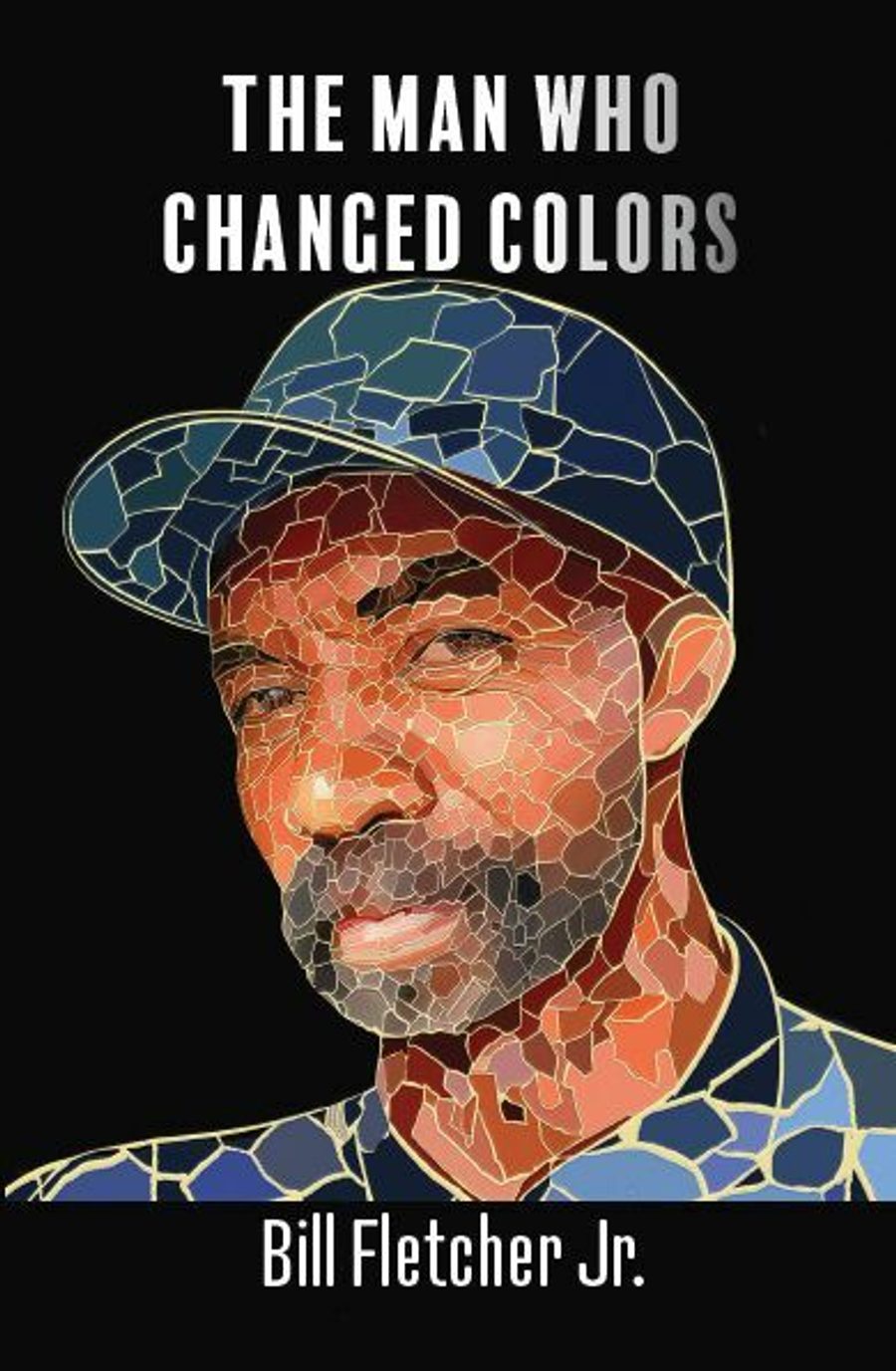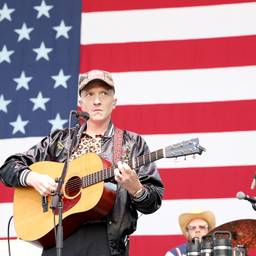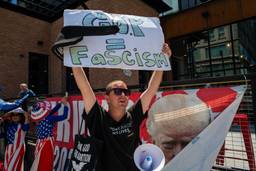Why Leftists Should Read The Man Who Changed Colors
“It is critically important that Leftists and progressives understand the complexity of humans rather than demonizing or idealizing anyone.”
Bill Fletcher, Jr.

The Man Who Changed Colors
By Bill Fletcher, Jr.
Published by Hard Ball Press (2023)
$17.00
356 pages
Available at www.hardballpress.com
979−8−9850979−6−2
The Man Who Changed Colors is a murder mystery revolving around race, justice, revenge, Cape Verdean Americans and evolving relationships. It is set in 1978-79 in the aftermath of the 1974 Portuguese Revolution and Cape Verde’s independence from Portugal in 1975. It is the sequel to The Man Who Fell From the Sky and features the same central character, David Gomes, a progressive journalist on Cape Cod who is asked by a doctor to write about the danger of shipyards after the death of a Cape Verdean immigrant.
The book is, obviously, written with radical politics, but it is not a treatise. It is fundamentally a story about a left-leaning journalist trying to find his own way. In the first novel, The Man Who Fell From the Sky, Gomes is a journalist in his mid-twenties who is wrestling with temptation and commitment. In The Man Who Changed Colors, Gomes has grown but is faced with a new set of challenges and dangers that he is largely unprepared to address. But this book is not designed to be didactic or performative, there is no correct line on this or that question.
Gomes is not a perfect character and neither are any of the others. A better way to think of him and the characters in the book is as various people you might have met at some point outside your organizing and activist circles along in your journey, people who are, for the most part, not in left or progressive organizations but are trying in their own ways to do the right thing. There is an important thread throughout the book about labor as The Man Who Changed Colors situates itself among shipyard workers and the challenges they face with a backwards labor union, dangerous working conditions, and a struggle within the workforce for respect.
I was less than a year out of college when I went to work in a shipyard. At that time, I had, frankly, an idealized notion of the working class. I was not ready for the contradictory views held in the heads of generally good people (and some not-so-good people). I want readers to wrestle with those contradictions when they read my novels, despite the fact that there are also complicated heroes. I also wanted to explore the line between justice and revenge, posing questions to the reader without necessarily offering conclusions.
Both The Man Who Changed Colors and The Man Who Fell From the Sky also explore themes of race, justice and revenge, but I also wanted to both increase the exposure of Cape Verdean Americans to U.S. audiences that ignore this incredible population of African descent as well as write something that would speak to Cape Verdean Americans.
The Cape Verdean experience with race is very different from that of African Americans who were brought to these shores in chains. Cape Verdeans came, beginning in the 19th century, voluntarily, and carried the experience of the white supremacy in Portugal. The Portuguese implemented a different form of white supremacy than how we’re used to understanding it, though it maintained the same interest in social control.
I think of fiction as a vehicle and hope readers will be intrigued and engage in further learning. I have dreamed up stories since I was in elementary school and it was when I became politically active in my teen years that I started to write, but not fiction. It was only after publishing my first non-fiction book in 2008, Solidarity Divided, that I decided to try writing a work of fiction. The first manuscript failed, but I kept going and eventually finished The Man Who Fell From the Sky. The response was really favorable so I decided to write a sequel. There were also some important questions that emerged in the first book that I wanted an opportunity to answer.
Most people think in terms of stories. They fit facts into a certain storyline, or they change the storyline due to facts that challenge their thinking. Regardless, most people do not think about an assortment of facts or how to hold multiple truths. They simply piece them together in order to make sense.
That is a framework I’m trying to disrupt and build on, and fiction can help do that work. That’s why in fiction — and this becomes very clear in science fiction — there are ideological battles over framework. In murder mysteries — and you can see this in film noir, as well as the work of authors such as Walter Mosley — characters are complicated. It is critically important that Leftists and progressives understand the complexity of humans rather than demonizing or idealizing anyone. Fiction and murder mysteries can expose these complexities as we see how characters tackle political, ethical, mental and physical challenges largely brought on by the society in which we live. What seems ordinary becomes something else.
As everyone knows, I normally write nonfiction and writing fiction is so very different. It has been a real challenge. My publisher and chief editor — Tim Sheard — did an amazing job helping me. But I appreciate that this is a lifelong effort. Many people have questioned why I would even write fiction. They sometimes suggest it is frivolous or difficult to grasp. Yet, after two novels, many of those same people have admitted that they, too, would like to write a book of fiction. They have told me that they, too, have a story. I have and will continue to encourage all of them to write.
March 2004, Mattapoisett, MA
Spring was coming and the ground was softening. At the construction site it was especially muddy. The construction crew was laying the foundation for a new housing development. Not far from Route 195, it was a great location for people with money who wanted to be close enough to Boston, New Bedford, and Providence, but distant enough to enjoy a bucolic life.
The place overall felt and smelled like a swamp, which is what the land had been. In some places the mud came up to the knees.
Near what was to become the sidewalk and half in the street, another set of workers were gathered, some drinking coffee, all walking around to stay warm, all wearing two layers of clothes to fight the cold. They were members of the Laborers Union, at the site to protest non-union construction being carried out by the non-union side of a company that had a Janus face: one side of the company had collective bargaining agreements with unions, the other side using a different name was entirely non-union.
Dozens of union members were beginning to assemble an informational picket line, pulling their signs from a van when a voice cried out from somewhere on the site, getting everyone’s attention.
“Hey, Jerry! Come here quick!” yelled one of the non-union construction workers.
Foreman Jerry Walker jogged over to Art Agapov, the worker who yelled. Agapov, a thirty-something Russian immigrant, tall with gaunt features, black hair streaked with grey, and dark eyes, had been digging one of the foundations.
“Take a look at this, Jerry,” Agapov said with a slight Russian accent, pointing towards the ground.
Peeking out of the hole that Agapov had been digging was what looked like the top of a skull. Throwing down his shovel, Agapov said, “I’m not messin’ with that.”
When the State Police cruisers approached, sirens blaring, the union protesters were not sure what to make of the situation. They only saw a group of the workers gathering. The protesters assumed that the police had arrived to break up the gathering and prepared for a confrontation.
The officers jumped out of their cruisers, ignoring the protesters, and rushed onto the construction site. Jerry approached the officers and took them over to the hole where the skull had been found. The union protesters stopped their marching and stared in disbelief at the discussion between the police and the foreman. Too far away to hear what was being said, the protesters could tell that something was very, very wrong.
“I wonder what they’re talkin’ about,” one of the protesters said to his buddy. Nobody in the union knew.
Minutes later a full crime scene team pulled onto the scene. The team taped the surrounding area around the hole and began carefully digging around the skull, like archeologists at the site of an ancient civilization. The crime team, their outfits getting muddier by the moment, took their time, slowly uncovering more and more skeletal remains of a body.
Officer Hanley, from the State Police, turned from the site to look at Jerry. “Well, Mister Walker, the bad news is, this site is going to be temporarily closed. We not only have to figure out about these remains, but we need to do some checking to see whether there are others. You know — ”
“Hey, Hanley, sorry to cut you off,” called one of the crime scene personnel, removing her gloves to rub her nose. “It looks like we have another body in here. And there is something else…some junk that I won’t be able to identify until we clean this place up.”
Hanley looked at Jerry and shrugged his shoulders. Jerry said nothing, he just pointed his right index finger at his head like a pistol and pulled the imaginary trigger. He walked off to give the crew the bad news, they would have some unexpected free time today…and maybe tomorrow as well. Free of work and free of earning money, he thought as he walked to the site’s trailer.
The 6 pm news had just come on. Sitting by himself, as he did most nights, Rodrigo Coval grabbed a beer while he watched the day’s events unfold.
“The remains of two people have been found in an unmarked grave in Mattapoisett along with what appears to be an antique clock. There are no indications of the identity of the bodies. The police on the scene have told this news reporter it appears that the bodies had been there for a very long time.”
Try twenty-five years, thought Coval, while he sat in his favorite chair, listening to the reporter. Twenty-five fuckin’ years of nightmares.
Coval stood up and looked at his beer belly for a moment — remembering a once muscular, firm body. He turned the television off, walked over to the window of his small, undecorated one-bedroom apartment in Buzzards Bay, Massachusetts, and stood there looking out at nothing, sipping his beer.
His former boss, Carlos Souza, had given his final order: take out two people who had created unnecessary problems for their organization. Coval, a loyal soldier, did as he was asked. He tricked the couple into believing that Souza needed them both for a new operation.
…
The Man Who Changed Colors is available from www.hardballpress.com and booksellers everywhere.
Bill Fletcher, Jr. is a talk show host, writer, activist, and trade unionist. The Man Who Changed Colors is his latest novel. His first novel is The Man Who Fell From the Sky. He is also co-author (with Fernando Gapasin) of Solitary Divided, and the author of “They’re Bankrupting Us” — Twenty Other Myths about Unions. You can follow him on Twitter, Facebook and at www.billfletcherjr.com.











